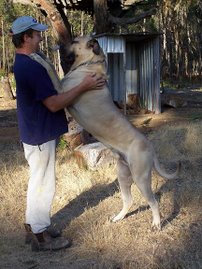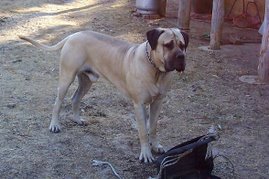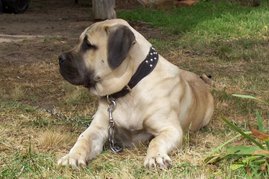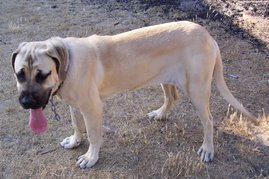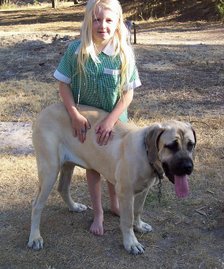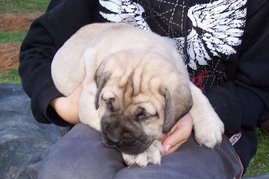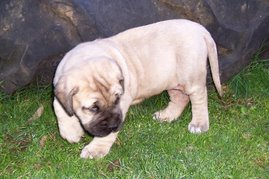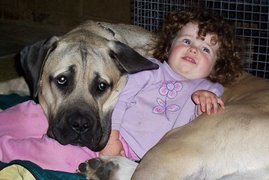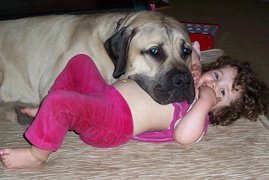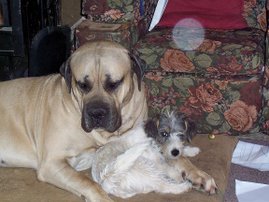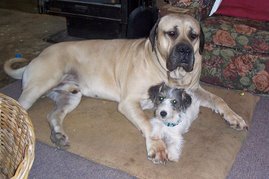Lameness and limping in puppies is common around the 5-9 month stage. The cause/s are usually one - or a combination of - genetics, diet or environment. Once you have identified the cause/s, then comes the confusing job of indentifying the condition (or giving the limp a medical name or diagnosis). Most people immediately jump to the conclusion that because you have a giant breed dog it must be hip dysplasia (or HD). But it could be other conditions - some of them temporary, some more serious. Some potential conditions are panosteitis, soft tissue injury, ligament/tendon damage or hip dysplaysia. I will include some links for further information on these here:
1. Panosteitis (or pano):
http://www.peteducation.com/article.cfm?cls=2&cat=1561&articleid=466
http://www.lowchensaustralia.com/health/pano.htm (particularly good piece with lots of links at the end)
2. Hip Dysplasia (or HD):
http://www.peteducation.com/article.cfm?cls=2&cat=1569&articleid=444
http://www.spinone.com/hipdysplasia.htm
3. Various potential reasons for limping:
http://members.aol.com/RocknRob56/limping.html (Mastiff specific info)
http://www.2ndchance.info/limping.htm
HIP DISPLAYSIA... GENETICS vs DIET vs ENVIRONMENT: the three-headed beast!
Simply put HD means poorly-formed hips, or hips that do not fit into their socket (read links above for a more detailed explanation). If your puppy (or adult) is diagnosed with HD you are probably wondering why it happened and what you did wrong. There are 3 main factors influencing whether a dog will or will not get HD. These are genetics, diet and environment.
1. Genetics: a dog is born with the problem due to defective genes in the parent/s. To which your answer may be "but the breeder told me the parents have had HD x-rays and my puppy has a guarantee" There is no guarantee that dogs screened for HD will not have offspring with the disease. Genetics are only thought to be a MINOR contributing factor. Simply put, even if a breeder assures buyers their dogs have been 'hip scored' (x-ray showing if HD is/is not present) and they guarantee their puppies then they are misleading the buyer. THERE IS NO GUARANTEE YOUR PUPPY WON'T HAVE HD! Even the most knowledgeable of scientists cannot agree on a single contributing factor for HD, hip scoring of adults is not eradicating the disease! Many vets and scientists believe that genetics play no part (read points 2 and 3 for the reason why).
2. Inappropriate Diet. Is thought to be a major contributing factor. The following quote shows an undeniable link between diet and HD:
I've included further detailed information in the diet section (see previous posts).
3. Environment: Studies have shown that another BIG contributor is exercise. This is either:
1. excessively exercising puppies and adults, allowing adults/pups to ‘rough house’ or play rough with each other, walking dogs up or down stairs and just over-walking in general. Mastiffs are lazy by nature, a plod around outside or a short stroll is all they need.
2. Not exercising your puppy enough - What!? I hear you say... but you just told me exercise causes problems! Excessively exercising your dog does, but weight-bearing exercise is crucial for healthy joints and hips that are 'ground in well' into their sockets. Many owners make the mistake of keeping their dog confined inside while they are away at work therefore the dog gets very little exercise. Then when you get home and let them out they go nuts! This is when injury will more than likely occur. This direct quote from Breeder Vet Journal explains this"
Their litter mates in private homes, where exercise is confined to an hour or two of intense play or jogging when their owners return from work, provide us with a different set of observations.
They grow very large, very fast. They often suffer injury. They frequently have hip sockets of different depths".
http://www.peteducation.com/article.cfm?cls=0&cat=1448&articleid=670
